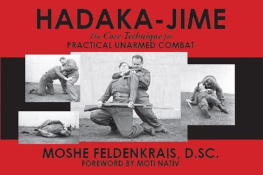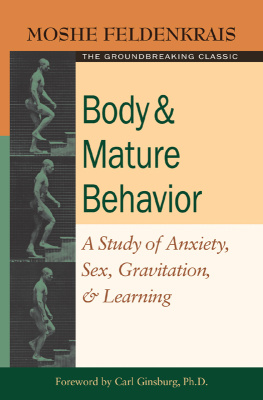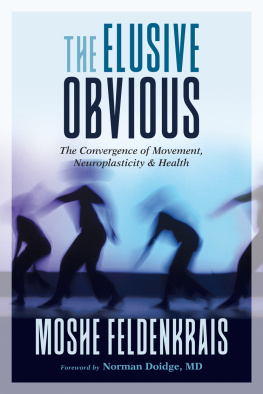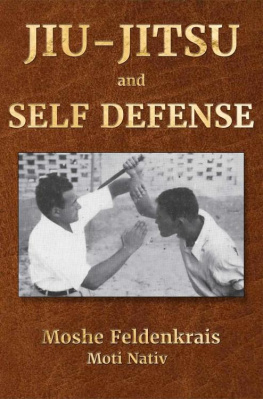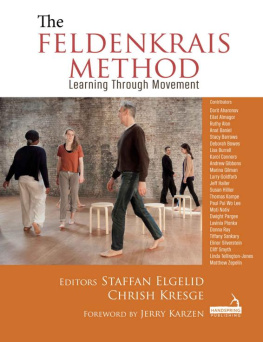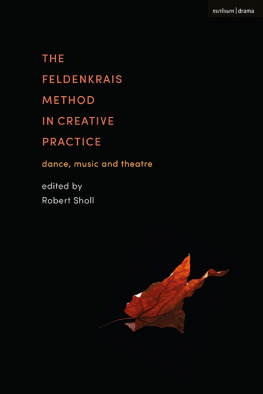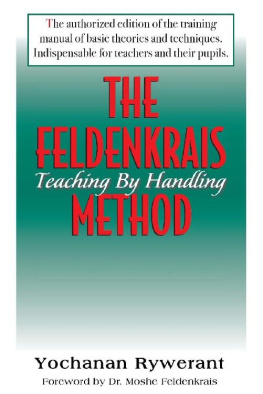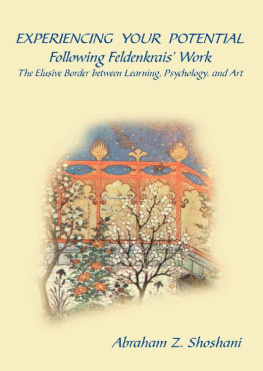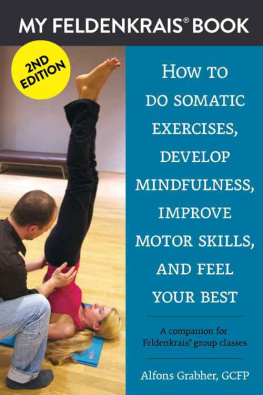Hadaka-Jime
The Core Technique for
Practical Unarmed
Combat
Moshe Feldenkrais,
D.Sc.
Copyright 2016, Moshe Feldenkrais, D.Sc.
Michel Silice Feldenkrais (1953-2009)
My dear friend Michel dedicated his life to the promotion of the Feldenkrais Method. He wholeheartedly supported this publication by providing a wealth of historical materials, clever advice, and his abiding respect for the Feldenkrais Method and the memory of his uncle, Moshe.
Im honored to dedicate the new edition of Practical Unarmed Combat to the memory of Michel Silice Feldenkrais.
PRAISE FOR HADAKA-JIME: PRACTICAL UNARMED COMBAT
Dr. Moshe Feldenkrais was a remarkable man; teacher, soldier, researcher, judoka, visionary, martial artist, physicist, and pioneer. He was a founder of the European Judo Union, and respected by Gunji Koizumi, Mikinosuke Kawaishi, and Jigoro Kano. I therefore consider it an honour and a privilege to have been asked to write an endorsement to the new edition of his important text.
I met Moti Nativ when he visited the Bowen History of Judo Archive at University of Bath to continue his research into the life and work of Moshe Feldenkrais. I was immediately struck by his passion and commitment, and his depth of understanding into the relationship of mind and body as applied to Budo.
For me this book speaks on three levels. It is a treatise of an effective course of unarmed combat which has withstood the test of time. It is also an important document of social and cultural history when considered in the context that it was written. Thirdly it provides a level of insight for the advanced follower of the Feldenkrais Method into the early thought processes of the founder.
Moti Nativ and Genesis II Publishing are to be commended for reminding us about the relevance of this text, and sharing with us the thoughts of a remarkable man.
Dr. Mike Callan, President, The International Association of Judo Researchers, International Judo Federation Sixth Dan
This impactful book reveals a pioneer who is equal parts warrior and educator, and offers a snapshot of a method in the midst of its making.
If you follow the trajectory of training outlined in this book, youll find the very same strategies and techniques that become the basis of Dr. Feldenkrais yet-to-be-announced method. By teaching only one martial arts technique, Feldenkrais creates a lesson-like experiment, rich in the interplay of theme and variation. The training reveals the big picture as it clarifies the details and, just as the student begins to put it all together, Moshe changes the actions orientation to space. And so on!
Thank you, Moti, for making this book available once again. The beautiful, user-friendly design is a fitting tribute to its historical importance.
Larry Goldfarb, Feldenkrais Trainer
This is a small book with big ideas. Utilizing his deep understanding and mastery of Judo, Moshe Feldenkrais created a course in practical unarmed self defense for the British during WWII. However, it was in how he addressed his task that we see the mind of a genius at work. Feldenkrais merged age old, Oriental self-defense techniques with the explanatory power of science, combined with his own unique brand of pedagogy to create a novel self defense strategy that is easy to learn and use. Based on the slow and thorough learning of one technique and its applications, the ten lessons artfully disarm the fears and apprehensions of those being trained while giving them the expertise necessary to succeed in combat. For the discerning reader a central idea will become evident: that if one first trains the act to be accomplished from its ending it allows for many beginnings. Once an act, here a particular stranglehold, is learned in its simplest form and becomes second nature and can be performed unselfconsciously, then that simple unitary act can be made either more complex or made to fit more complex situations. The approach taken in this book is consonant with the basis of all Feldenkrais approach to learning. It will be of unquestioned value to both martial artists and Feldenkrais practitioners.
Moti Nativ is to be commended not only for bringing this book out of retirement but also for his introduction and commentaries which convey the observations of a true teacher of the martial arts and a Feldenkrais Practitioner.
Dennis Leri, Feldenkrais Trainer and Martial Artist
Both martial artists and movement students will find Hadaka-Jime The Core Technique for Practical Unarmed Combat a valuable guide with both practical techniques and profound insights about the learning process. Feldenkrais clear instructions, peppered with his wry humor and personal philosophy, make this much more than a combat training manual. The illustrations provide a fascinating window into the development of Moshe Feldenkrais methodology as well as clear instructions to accompany the text.
Lavinia Plonka, Guild Certified Feldenkrais Practitioner, author, What are You Afraid of and Walking Your Talk
CONTENTS
FOREWORD
IT is with great awe that I approach the writings of Moshe Feldenkrais. I marvel at the genius of his thought processes and at his fighting spirit. So with great reverence I am writing the foreword to his unique book Practical Unarmed Combat.
In this distinctive book, Moshe Feldenkrais lays out a particularly successful training process. His conclusions regarding the essence of learning through clear, direct statements and by implication are clearly presented to the reader. He provides a very detailed and accurate description of specific combat techniques and also presents the reader with principles of the learning process which are valid for all of lifes endeavors.
Anyone who reads this book can use it for the practical study of the combat techniques presented or implement the principles to design a personal training program.
ABOUT MOSHE FELDENKRAIS
Moshe Feldenkrais was born in 1904, in Slavuta, in the present-day Ukrainian Republic. By 1912 his family moved to Baranovich, located in Belarus, Russia. As a fourteen year old boy he undertook a daring journey from his home to the British mandate of Palestine, to lend a hand in building the fledgling Jewish settlement and to play a role in the struggle for an independent Jewish state in the land of Israel. At that time, building the Jewish settlement mainly consisted of hard physical labor, and was often accompanied by violent brawls between the Jewish pioneers and their Arab neighbors. The British governors forbade the pioneers from carrying guns. Even though the pioneers received some self-defense training in Ju-Jitsu, the confrontations often ended in heavy casualties.
Moshe Feldenkrais took an active part in these brawls and came to understand that there were basic flaws in the training that purported to prepare the Jewish warriors to handle these events. He decided to put together his own system of combat. At that time, in addition to his knowledge of Ju-Jitsu, Moshe was well educated in boxing, learning from his friend Amiel (Emil) Avineri
While in France he enrolled in an engineering college, the cole Spciale des Travaux Publics de la Ville de Paris.
He subsequently earned his D.Sc. in Physics from the Sorbonne and was a close associate of Nobel Prize Laureate Frederic Joliot-Curie at the Curie Institute in Paris, where they conducted research together.
Next page
